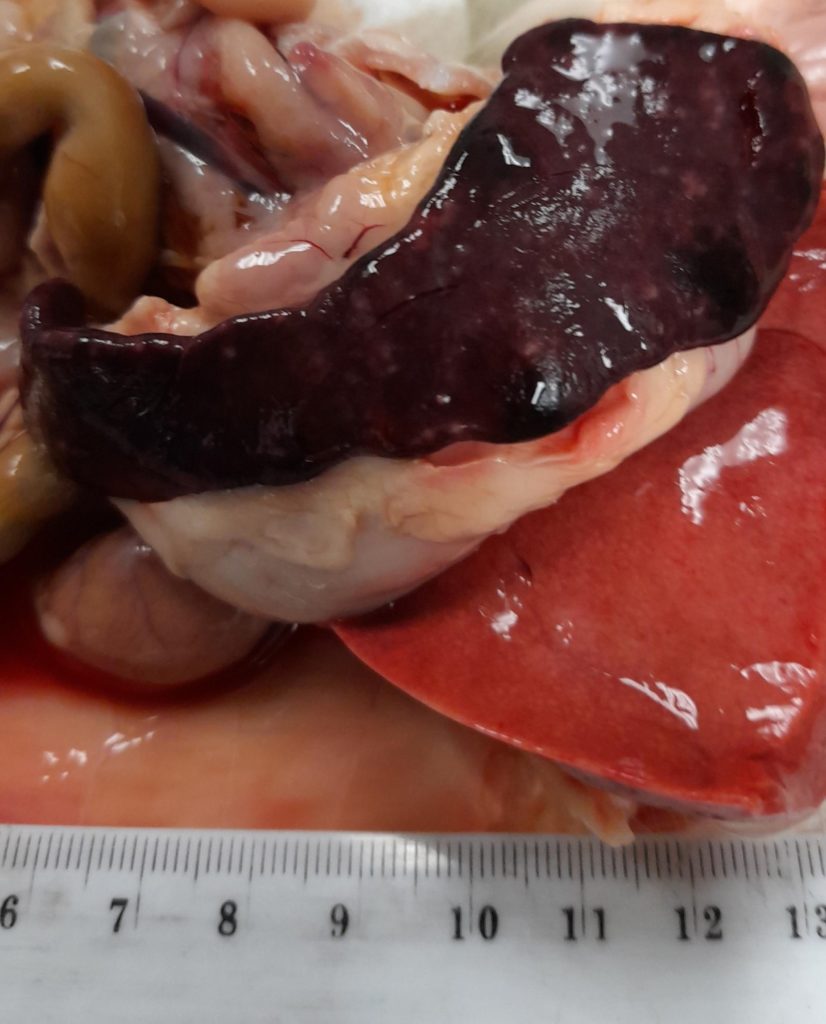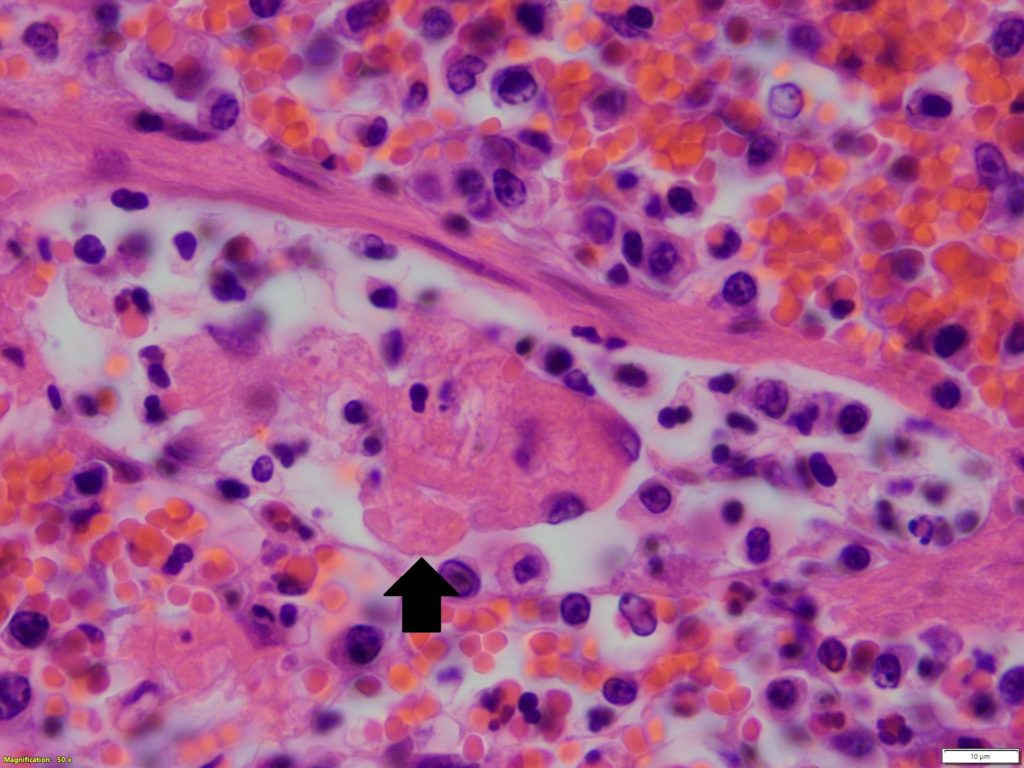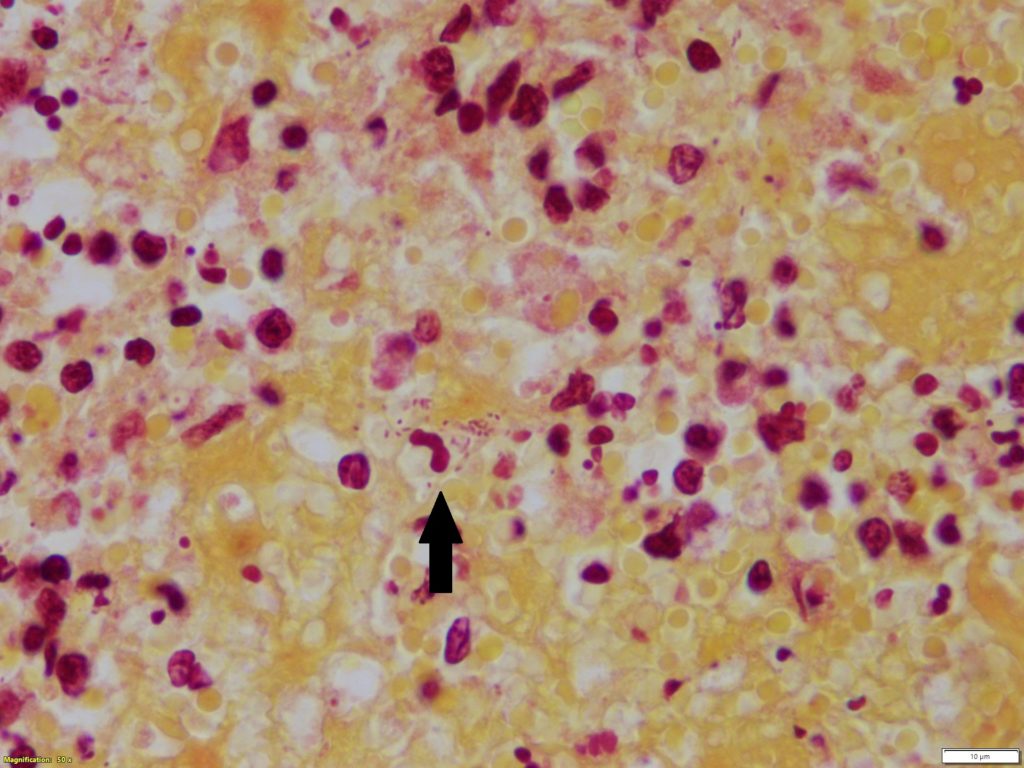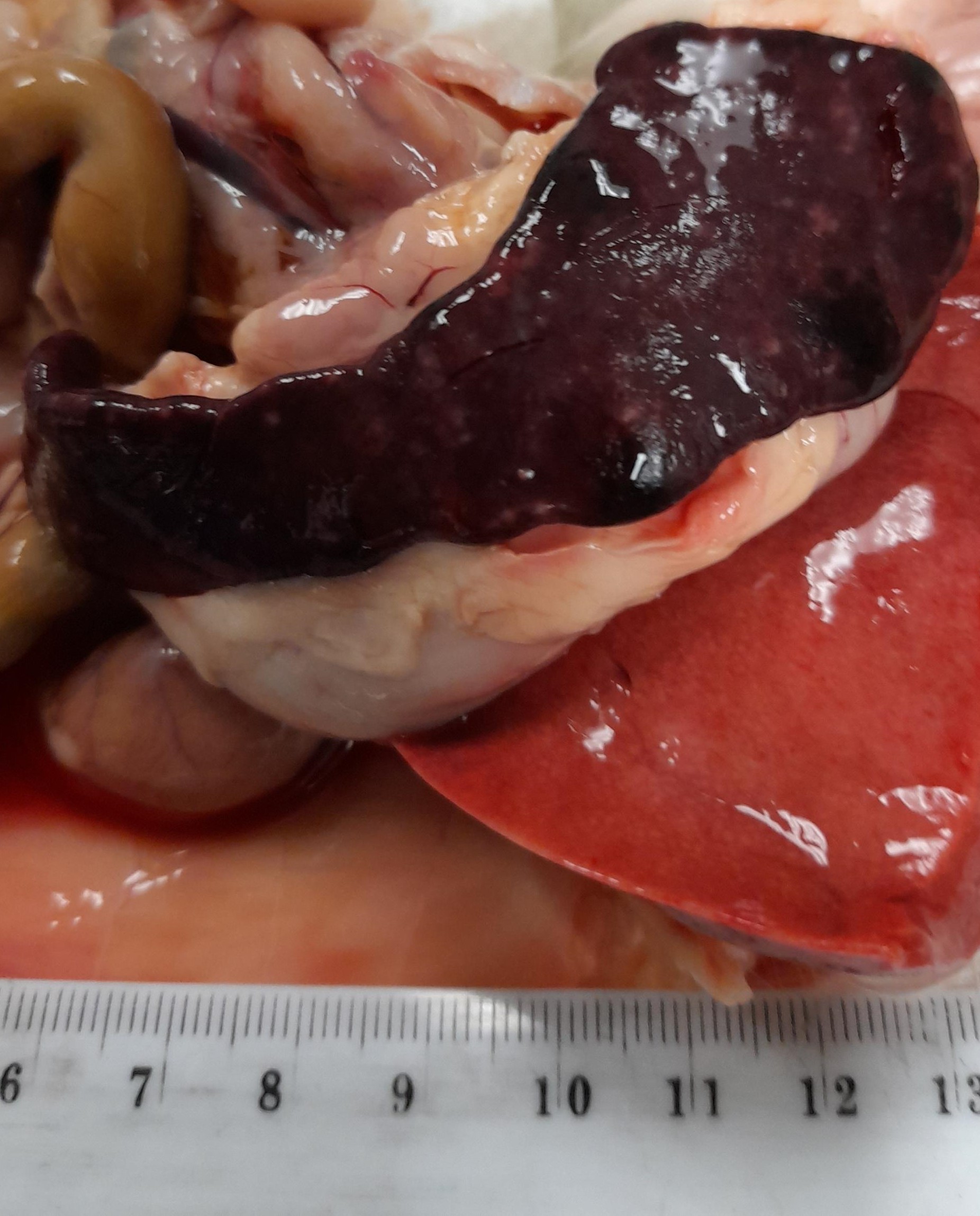CATHY HARVEY & LISA HULME-MOIR
Clinical history
After a short period of illness (quiet and hunched, with pale mucous membranes) an approximately 6 week-old female, intact pedigree kitten died despite supportive treatment. At autopsy the liver was enlarged with rounded margins and light brown with a prominent reticular pattern. The spleen was enlarged (90×10 to 30×5 mm) and mottled.

Photo 1. Enlarged spleen and liver at autopsy
Histology findings
On histopathology of the liver and spleen, there were multifocal areas of haemorrhage and necrosis with degenerate neutrophils, and multiple fibrin thrombi. Some of the blood vessels with fibrin thrombi also contained intravascular short Gram-negative bacilli, consistent with a bacteraemia and septicaemia with disseminated intravascular coagulation (DIC). There was no evidence of underlying viral infection.

Photo 2. Histopathology, spleen – fibrin thrombi, H&E 1000x.

Photo 2. Histopathology, spleen – fibrin thrombi, H&E 1000x.
Microbiology
A heavy growth of Salmonella Bovismorbificans was cultured from the tissues, presume enteric in origin, but a site of inflammation in the gastrointestinal tract was not found.
Discussion
On further history the mother was fed raw meat and had no access to outdoors. So in this case, infection was likely through directly eating raw infected meat or indirect exposure via Salmonella being shed in mother’s faeces secondary to her eating contaminated meat.
Salmonella serotypes occur world-wide. They infect many animals and are excreted in the faeces, which infect other animals when ingested from water, soil, animal feeds, raw meat, offal and vegetable material. S. Bovismorbificans cases (diarrhoea and acute outbreaks involving pregnant or recently calved cows that cause deaths in cows and calves), have emerged as a major cause of salmonellosis in New Zealand cattle over the last seven years with concurrent rises in human, canine and feline cases.
In a recent review of Salmonella cases recorded in cats through Gribbles Veterinary laboratories (Hulme-Moir, 2022), the majority of isolates were Typhimurium, with smaller numbers of cases of Bovismorbificans, Saint Paul, Enteriditis, Brandenburg, Mbandaka and Victoria.
Distinct differences were noted in the signalment of cats infected with Typhimurium compared to non-Typhimurium serovars.
Cats with Typhimurium showed a breed distribution that approximated the general cat population; however, non-Typhimurium cases were more common in pedigree cats and these cases tended to be younger and more frequently involving litters of kittens, largely from breeding establishments.
As Salmonella serovars emerging in cattle and companion animals are causing disease in humans, hygiene precautions should be reinforced to owners with diarrhoeic animals and discussion of the risk of salmonellosis is important, particularly with cat breeders.
Reference:
Lisa Hulme-Moir: Salmonella trends in companion animals in New Zealand. NZVA Conference 2022.

